Photo Courtesy of Artist
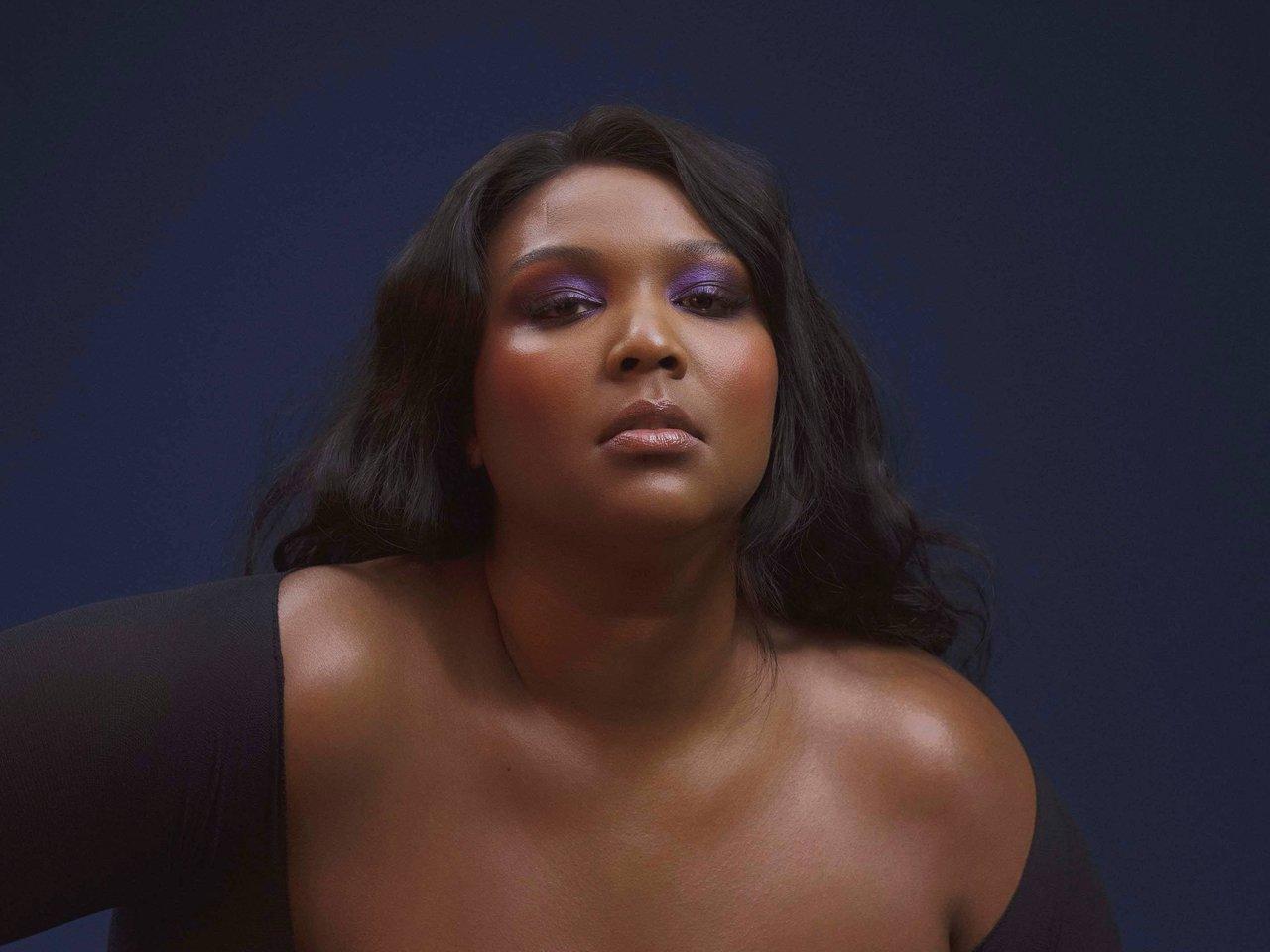
Lizzo
news
Full Presenter Lineup For 2021 GRAMMY Awards Show Announced: Jhené Aiko, Lizzo, Jacob Collier And Ringo Starr Confirmed
The 2021 GRAMMY Awards show presenter lineup will include current GRAMMY nominees and past GRAMMY winners
The Recording Academy has announced the full presenters lineup for the 2021 GRAMMY Awards show, officially known as the 63rd GRAMMY Awards. Presenters include current nominees Jhené Aiko and Jacob Collier as well as GRAMMY winners Lizzo and Ringo Starr.
The 2021 GRAMMY Awards show takes place Sunday, Mar. 14, at 8 p.m. ET/5 p.m. PT on CBS and Paramount+.
Ahead of the GRAMMYs telecast, the 63rd GRAMMY Awards Premiere Ceremony will take place Sunday, March 14, at noon PT/3 p.m. ET, and will be streamed live internationally via GRAMMY.com.
To view a list of current nominations per artist, please visit our GRAMMY Awards performer and presenter page.
See a full list of each of the presenters' GRAMMY history below:
Jhené Aiko
- Career nominations: 6
- Current nominations
- Album Of The Year – Chilombo
- Best R&B Performance – "Lightning & Thunder" featuring John Legend
- Best Progressive R&B Album – Chilombo
Jacob Collier
- Four-time GRAMMY winner
- Career nominations: 7
- Current nominations
- Album Of The Year – Djesse Vol.3
- Best R&B Performance – "All I Need"
- Best Arrangement, Instruments and Vocals – "He Won't Hold You"
Lizzo
- Three-time GRAMMY winner
- Career nominations: 8
Ringo Starr
- Nine-time GRAMMY winner
- Career nominations: 27
How To Watch The 2021 GRAMMY Awards Show: A Viewer's Guide On Where To Watch Music's Biggest Night
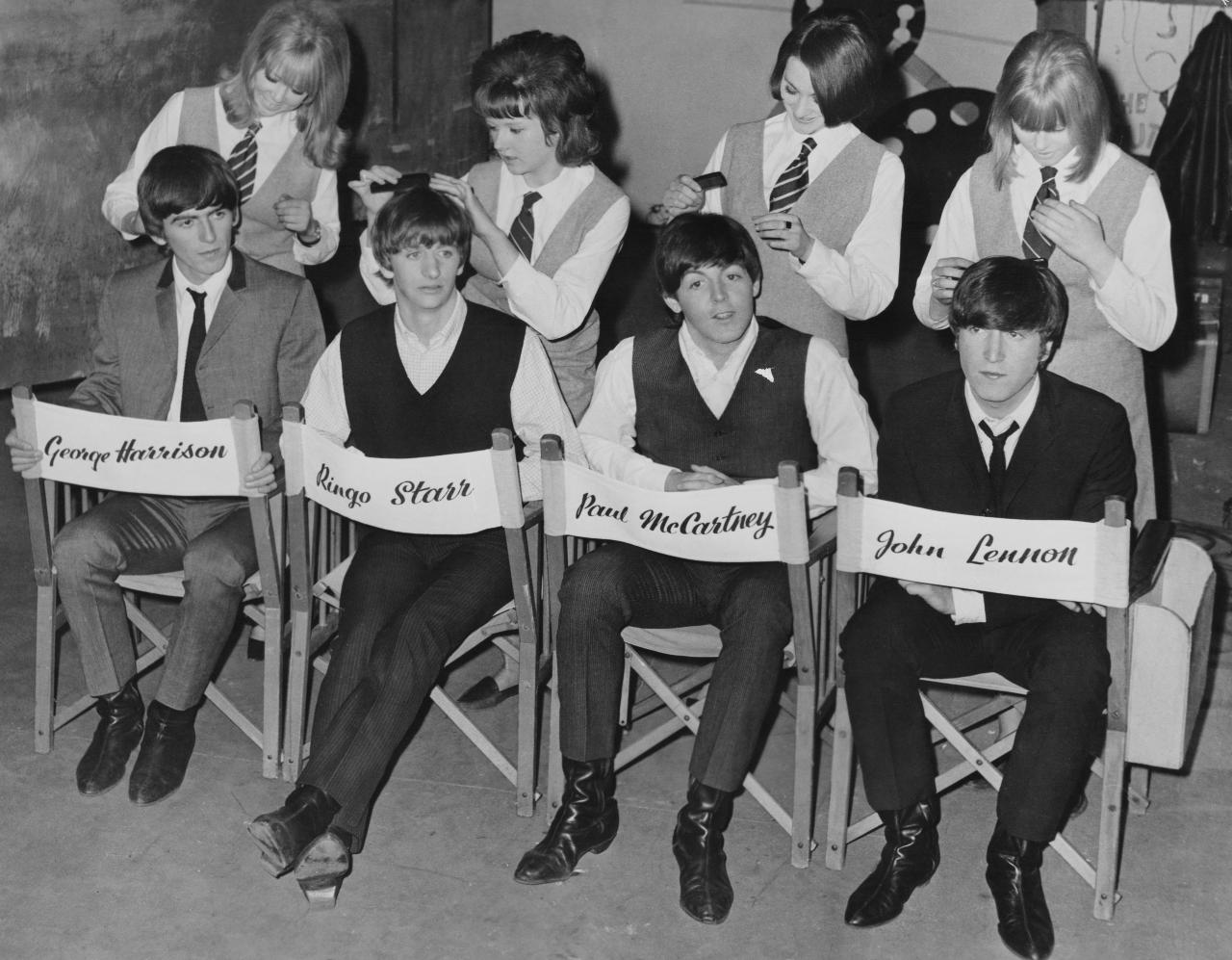
Photo: Archive Photos/Getty Images
list
'A Hard Day's Night' Turns 60: 6 Things You Can Thank The Beatles Film & Soundtrack For
This week in 1964, the Beatles changed the world with their iconic debut film, and its fresh, exuberant soundtrack. If you like music videos, folk-rock and the song "Layla," thank 'A Hard Day's Night.'
Throughout his ongoing Got Back tour, Paul McCartney has reliably opened with "Can't Buy Me Love."
It's not the Beatles' deepest song, nor their most beloved hit — though a hit it was. But its zippy, rollicking exuberance still shines brightly; like the rest of the oldies on his setlist, the 82-year-old launches into it in its original key. For two minutes and change, we're plunged back into 1964 — and all the humor, melody, friendship and fun the Beatles bestowed with A Hard Day's Night.
This week in 1964 — at the zenith of Beatlemania, after their seismic appearance on "The Ed Sullivan Show" — the planet received Richard Lester's silly, surreal and innovative film of that name. Days after, its classic soundtrack dropped — a volley of uber-catchy bangers and philosophical ballads, and the only Beatles LP to solely feature Lennon-McCartney songs.
As with almost everything Beatles, the impact of the film and album have been etched in stone. But considering the breadth of pop culture history in its wake, Fab disciples can always use a reminder. Here are six things that wouldn't be the same without A Hard Day's Night.
All Music Videos, Forever
Right from that starting gun of an opening chord, A Hard Day's Night's camerawork alone — black and white, inspired by French New Wave and British kitchen sink dramas — pioneers everything from British spy thrillers to "The Monkees."
Across the film's 87 minutes, you're viscerally dragged into the action; you tumble through the cityscapes right along with John, Paul, George, and Ringo. Not to mention the entire music video revolution; techniques we think of as stock were brand-new here.
According to Roger Ebert: "Today when we watch TV and see quick cutting, hand-held cameras, interviews conducted on the run with moving targets, quickly intercut snatches of dialogue, music under documentary action and all the other trademarks of the modern style, we are looking at the children of A Hard Day's Night."
Emergent Folk-Rock
George Harrison's 12-string Rickenbacker didn't just lend itself to a jangly undercurrent on the A Hard Day's Night songs; the shots of Harrison playing it galvanized Roger McGuinn to pick up the futuristic instrument — and via the Byrds, give the folk canon a welcome jolt of electricity.
Entire reams of alternative rock, post-punk, power pop, indie rock, and more would follow — and if any of those mean anything to you, partly thank Lester for casting a spotlight on that Rick.
The Ultimate Love Triangle Jam
From the Byrds' "Triad" to Leonard Cohen's "Famous Blue Raincoat," music history is replete with odes to love triangles.
But none are as desperate, as mannish, as garment-rending, as Derek and the Dominoes' "Layla," where Eric Clapton lays bare his affections for his friend Harrison's wife, Pattie Boyd. Where did Harrison meet her? Why, on the set of A Hard Day's Night, where she was cast as a schoolgirl.
Debates, Debates, Debates
Say, what is that famous, clamorous opening chord of A Hard Day's Night's title track? Turns out YouTube's still trying to suss that one out.
"It is F with a G on top, but you'll have to ask Paul about the bass note to get the proper story," Harrison told an online chat in 2001 — the last year of his life.
A Certain Strain Of Loopy Humor
No wonder Harrison got in with Monty Python later in life: the effortlessly witty lads were born to play these roles — mostly a tumble of non sequiturs, one-liners and daffy retorts. (They were all brought up on the Goons, after all.) When A Hard Day's Night codified their Liverpudlian slant on everything, everyone from the Pythons to Tim and Eric received their blueprint.
The Legitimacy Of The Rock Flick
What did rock 'n' roll contribute to the film canon before the Beatles? A stream of lightweight Elvis flicks? Granted, the Beatles would churn out a few headscratchers in its wake — Magical Mystery Tour, anyone? — but A Hard Day's Night remains a game-changer for guitar boys on screen.
The best part? The Beatles would go on to change the game again, and again, and again, in so many ways. Don't say they didn't warn you — as you revisit the iconic A Hard Day's Night.
Explore The World Of The Beatles
.webp)
5 Reasons John Lennon's 'Mind Games' Is Worth Another Shot

'A Hard Day's Night' Turns 60: 6 Things You Can Thank The Beatles Film & Soundtrack For
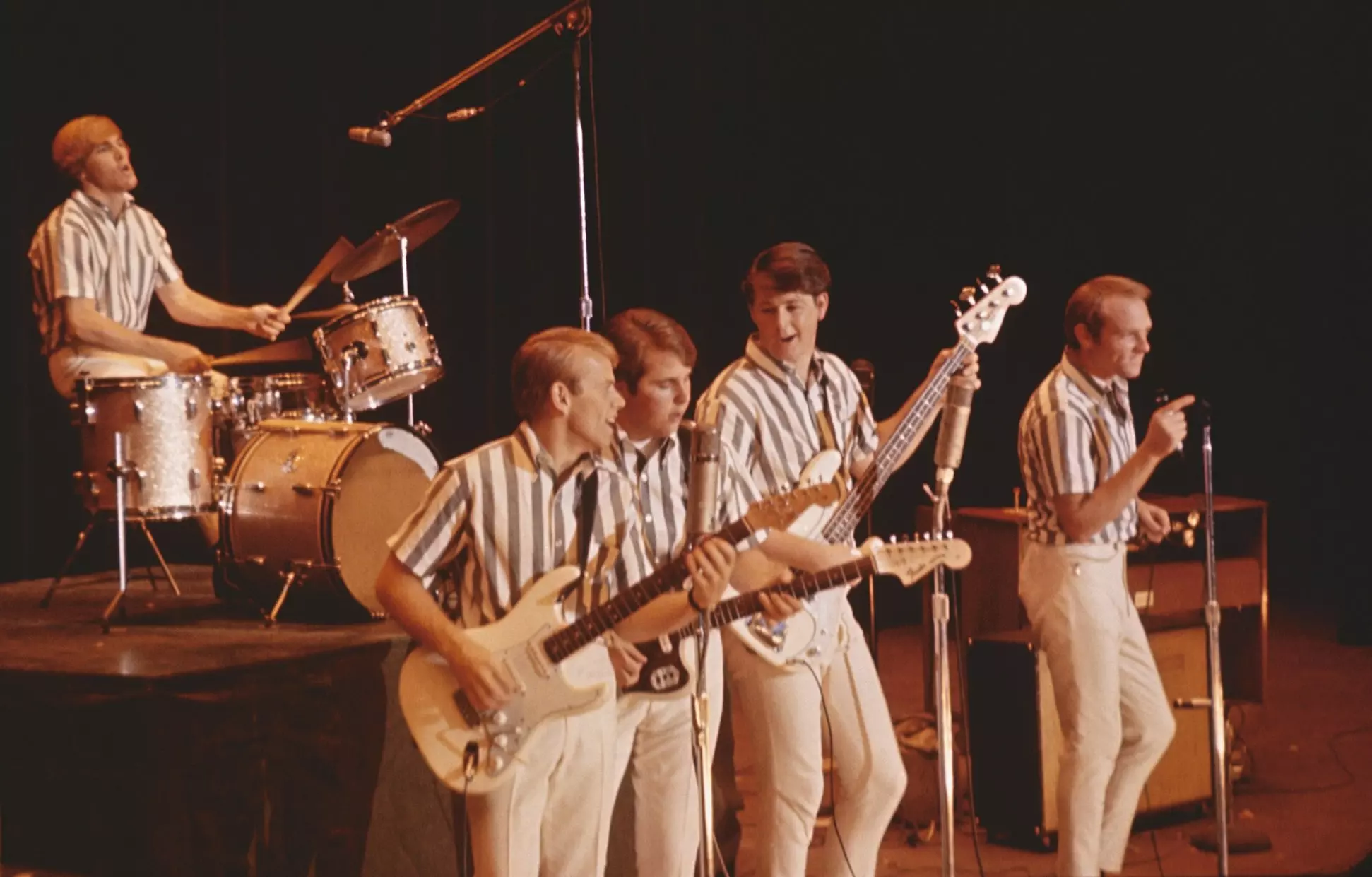
6 Things We Learned From Disney+'s 'The Beach Boys' Documentary

5 Lesser Known Facts About The Beatles' 'Let It Be' Era: Watch The Restored 1970 Film
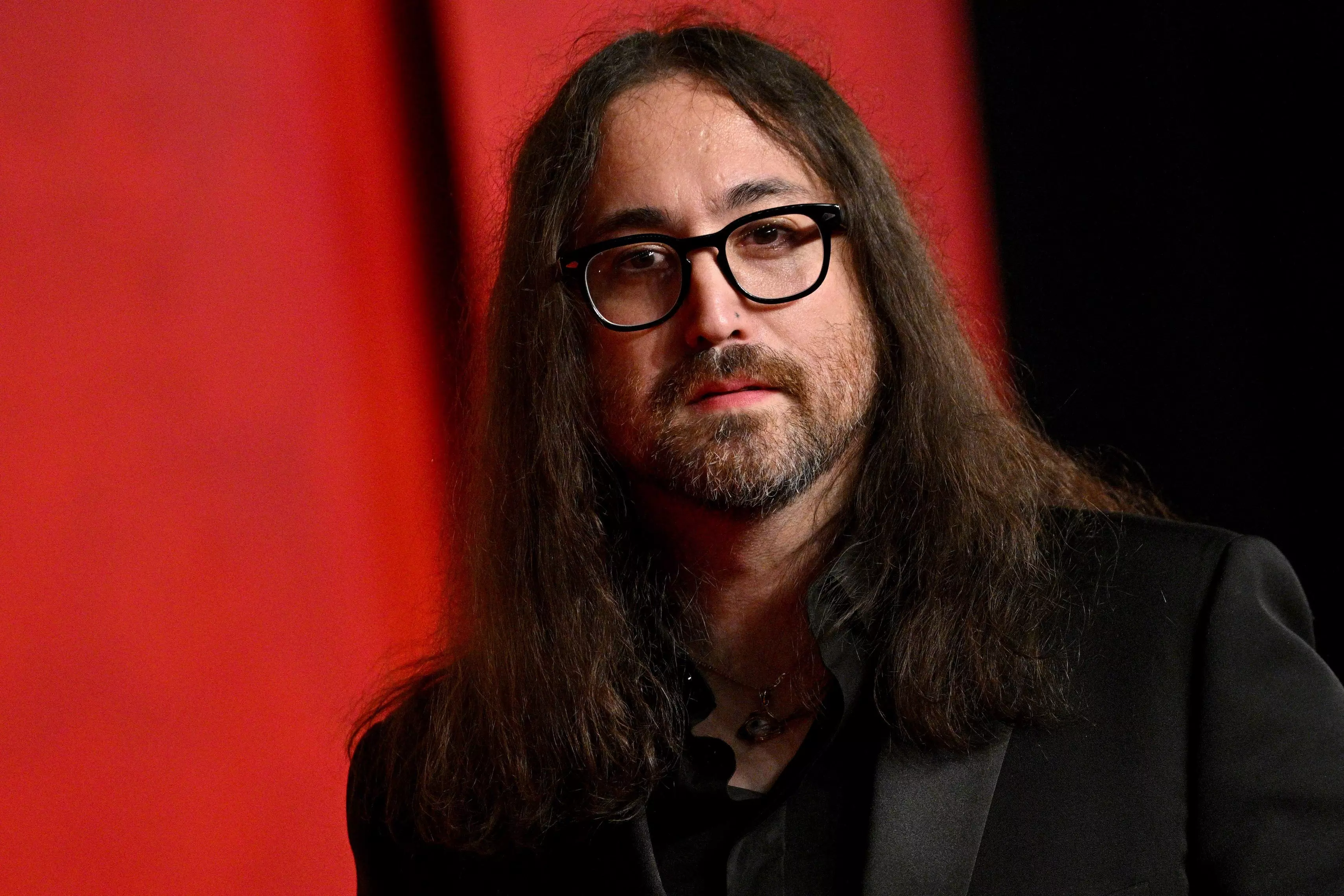
Catching Up With Sean Ono Lennon: His New Album 'Asterisms,' 'War Is Over!' Short & Shouting Out Yoko At The Oscars
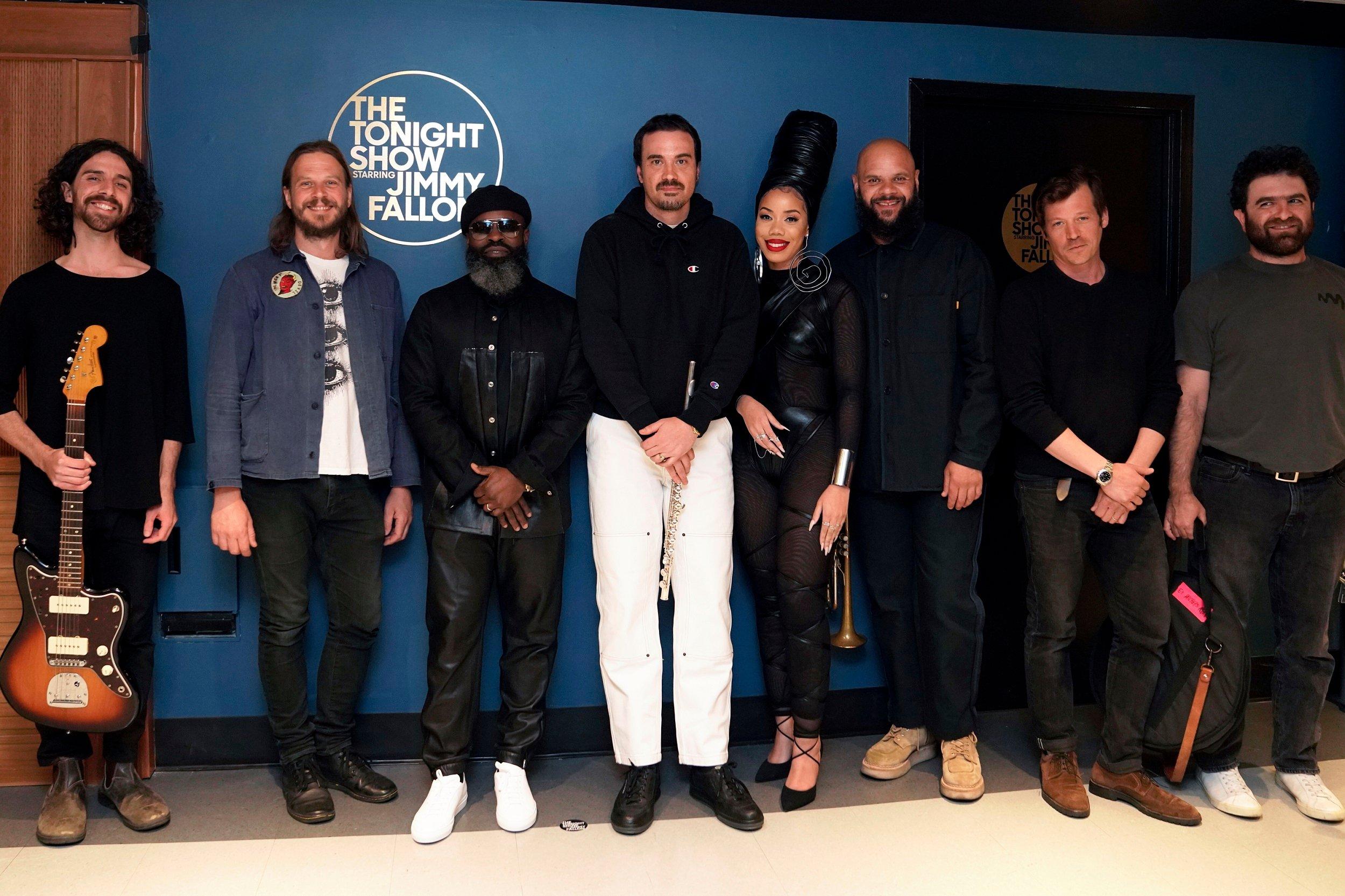
Photo: Rosalind O'Connor/NBC via Getty Images
interview
Behind Leon Michels' Hits: From Working With The Carters & Aloe Blacc, To Creating Clairo's New Album
Multi-instrumentalist turned GRAMMY-nominated producer Leon Michels has had a hand in a wide range of pop and hip-hop music. Read on for the stories behind his smash hits with Norah Jones, Black Thought, Kalis Uchis, Aloe Blacc, and others.
A child of New York’s ultra-niche soul revival scene of the early 2000s, multi-instrumentalist turned producer Leon Michels has had an extensive reach into global pop music. As both producer and session man, Michels has worked with the Carters, Norah Jones, Black Thought, the Black Keys, Kalis Uchis, and Aloe Blacc — to name a few.
He has held to a specific creative vision for more than two decades, first through his heavily sampled El Michels Affair projects and a healthy schedule of releases through Truth & Soul records and later, Big Crown, the label he co-founded with DJ Danny Akalepse in 2016. He runs a studio in upstate New York called the Diamond Mine North, where he does most of his work since relocating from New York City in 2017. He has two GRAMMY nominations to his name, for Mary J. Blige’s Good Morning Gorgeous and Lizzo’s Special.
Trained originally on piano, he took up drums and eventually saxophone through the guidance of his high school music teacher, Miss Leonard. "[She] is actually the person I owe it all to. She started this jazz band when I was in fifth grade, and there's no drummer, so she asked me if I would learn drums," he tells GRAMMY.com. "I did that, and she would give me Duke Ellington cassettes, Sydney Bichet, Johnny Hodges. She would just feed me music."
Daptone Records co-founder Gabe Roth recruited and mentored Michels while he was still in high school, and the teenager soon became a regular touring member of what would become the Dap-Kings, backing singer Sharon Jones during an early run of success in the mid-2000s. " I joined Sharon Jones when it was the Soul Providers. We went on tour in Europe with them. Somehow my parents let me do it. I don't even understand. Gabe came over and sweet-talked them."
Michels left the group in 2006 after seven intense years, wanting to spend more time recording than enduring the grind of touring. His chosen timing caused him to miss out by mere "months" on the group’s recording sessions for Amy Winehouse’s four-time GRAMMY winner Back To Black. Despite what appeared to be a major missed opportunity, he turned his focus to his group El Michels Affair after initial encouragement from the 2005 album Sounding Out The City, released on Truth & Soul, the label he had co-founded.
Finding his inspiration in the intersections of soul and hip-hop, as a fully committed instrumentalist producer, he was able to develop an analog soundscape that quickly caught the ears of artists including Raekwon and other Wu-Tang Clan alumni, with whom he toured in 2008. This led to the follow-up album Enter The 37th Chamber in 2009. Samples from El Michels Affair, including those by Ghostface Killah, Jay-Z, Just Blaze, J. Cole, and Travis Scott quickly proliferated and opened doors. Via the Lee Fields album My World, Michels' work caught the attention of Dan Auerbach, with whom he and his longtime collaborator and bassist Nick Movshon toured from 2010 to 2012.
Producing the Aloe Blacc song "I Need A Dollar" in 2010 further enhanced his credentials and provided the financial stability to allow him to be true to his creative spirit, which he has done successfully over the last decade.
Leon Michels spoke to GRAMMY.com about some key career recordings, including his latest release with singer Clairo.
Clairo – "Sexy to Someone" (Charm, 2024)
I met Clairo almost three years ago. I made a record with her that took three years to complete, which is actually one of the longest stretches I've ever spent on a record.
She’s made two records before this. Her first record, Immunity, came out when she was 19. It's a pop record, and it was very successful. But she's a total music nerd like me. She’s constantly scouring the Internet for music. The way people, especially young people, ingest music these days is just insane. She's got great taste.
Her first record was super successful. She made her second record, Sling, with Jack Antonoff, and it was an ambitious folk record, and a huge departure from her first record. I think it caught her audience off guard, but it was kind of a perfect move because now she can make whatever she wants.
When she came to me, I was excited but slightly confused. What do I do? Because in those situations, you think, well, I need to facilitate a successful pop record, but she just wanted all the weird s—.
It’s this cool mix of pop elements, but some of the music sounds like a Madlib sample. All of it is steeped in pretty cool references and older music, but her perspective is a 25-year-old’s, and she’s an incredible songwriter. It's a really cool mix.
Norah Jones - "Running" (Visions, 2024)
Norah used to hit up me and Dave Guy, trumpet player in the Menahan Street Band and the Roots, if she needed horns.
As we were coming out of the pandemic, she hit me up and wanted to make some music. We made a few songs and then after that, she asked me to produce her Christmas record, which was super fun because I've never listened to Christmas music. I started to enjoy it, which was weird because I had thought I hated Christmas music. I mean, once you start to dig for Christmas records, pretty much all of your favorite artists have them. I was listening to Christmas music from March to October the entire year.
After that, we made Visions, which is all original stuff. Norah's just so talented. Her musicianship is actually some of the most impressive I've ever seen or worked with. She's so good that when I play with her, I get intimidated and I forget basic harmony and music theory!
We cut that record, mostly just the two of us. There's a couple of songs where we got a band, but most of it was in my upstate studio. She would just come over from nine to three. She would come after she dropped her kids at school and then have to leave to pick them up. It was super fun to make, essentially just jamming all day.
[Overall] it’s not a huge departure for Norah, but sonically it is a departure, and it's got this very loose, "un-precious" quality. That's maybe a little different from her other stuff.
"Running" was her choice as a single. When it comes to singles — the songs that have actually been most successful — I've wanted to take those off the record. I have no idea what's going to be the hit or not.
Black Thought - "Glorious Game" (Glorious Game, 2023)
That was a total pandemic record — at the start of the pandemic when everyone was completely locked in, we had no idea what was going on.
Black Thought texted me out of the blue, and I think he was just trying to stay busy. So he just said, "Can you send me songs?" I sent him maybe two songs and then he sent back finished verses three or four hours later. Most of that record was just me sending him s— and him sending it back, and then going like that. We had probably 20 songs.
The time I did spend in the studio with him was, he's a total savant. He sits there while you're playing a song, and it kind of looks like he's on Instagram or f—ing around, you know what I mean? Does this guy even like this song? And then 45 minutes later, he’ll be like "Aight, ready." And he goes in there and, and he'll rap four pages of lyrics in one take. It's insane. He remembers everything; we'll do a song and then three years later, he'll have to redo it, but he'll know the lyrics from memory.
There's a couple of things that I figured out on that record. One: The thing I love about sampled hip-hop production the most is it's almost always pitch-shifted, which makes a giant difference in the sound. And if the piano has decay or vocals have vibrato, when you pitch it up, it becomes something that is so uniquely hip-hop. The second thing was, with hip hop, one of the best parts about sampling is the choices a producer has to make when they are limited to chopping a two-track mix. If you have multi-tracks, there are too many options.
I think that record resonated with people who are hip-hop aficionados who really love the art of emceeing.
Aloe Blacc - "I Need A Dollar" (Good Things, 2010)
We had just recorded the Lee Fields record, My World. Eothen Alapatt, who used to be a label manager at Now Again, was a friend of mine. [Jeff Silverman and I] started Truth & Soul, but we had no infrastructure. We thought My World would have a bigger reach if Stones Throw took care of the press and distribution. And so Eothen said "Yeah, we can do that, but instead of paying us, just make a record with this artist we have, Aloe Blacc."
I had no idea who he was. And so that was the business deal. We didn't get paid for the record initially. The payment was that they were going to promote Lee Fields record for us. So [Aloe] came to New York, and I did it with my partner at the time, Jeff Silverman, also Nick Movshon, who played on the entire record.
He wanted to do this Bill Withers thing. "I Need A Dollar" was probably my least favorite song on the record. I think I have this aversion to anything that's slightly cheesy, but I've gotten better at it. But at the end of the day, it's just a good song. It got picked up as the theme song to an HBO pilot called "How To Make It In America." And then, it just blew up in Europe. It was No. 1 everywhere. But it never hit in America.
It kind of set me off on a weird path for a minute, because I got a taste of success. And made some poor career decisions. I tried to a do lot of songwriting sessions with strangers. It was maybe four years until I decided to just make El Michels Records.
The Carters - "SUMMER" (EVERYTHING IS LOVE, 2018)
At the time, I was making these sample packs and sending them out to producers. One of them was this slow jam, and so the producers called me up and said "We used one of your samples. It's for a giant artist. We can't tell you who it is. You have to approve it now. And you can't hear it, but it's going to change your life." That’s what they kept saying to me. Then they said "It's coming out in two weeks."
So I figured they used one of my samples and chopped it up and did their thing to it. And so when the record came out, it was Beyoncé and Jay-Z. It was the first track on that record they did together, the Carters. And it was mostly just my original sample with some new bass and string section. So basically it was just Beyoncé and Jay-Z over an El Michael's Affair track. The track was called "Summer," and my original never came out.
So just hearing Beyoncé, hearing these giant pop voices that I associate with absolute hits, over my song, that was pretty cool.
Liam Bailey - "Dance With Me" (Zero Grace, 2023)
Me and him just have a very crazy chemistry when it comes to music, because it all happens super fast and with very little thought. Sometimes I'll listen to Liam's stuff, and I actually don't know how we did it. That is actually the goal. That’s why Lee "Scratch Perry" is the greatest producer of all time, because he could access that instant input, instant output type of creativity. It just passes through him and then it's on the record. Making music with Liam is like that; I'll make some instrumental, or I'll have an idea and then he'll freestyle lyrics one or two times.
To me, it sounds gibberish, but then he'll go through it and change one or two words and all of a sudden has this crazy narrative, and it's about his childhood [for example]. When I’ve worked with him, he has this same process where it's just kind of "hand to God" s—, just let it happen. I was trying to make something the way Jamaicans did, [like] that brand of Jamaican soul from the mid-'60s.
Brainstory - "Peach Optimo" (Sounds Good, 2024)
I met those guys through Eduardo Arenas, who's the bass player from Chicano Batman, and he had recorded a couple of demos from them. And they had one song in particular that really caught my attention, which made it onto their first record called "Dead End."
They’re three jazz kids. Their dad was a gospel singer and loved soul and Stevie Wonder. So they grew up on all that stuff as well. Producing a band like Brainstory is super easy, because they rehearse all the time. Most of their songs are written; all I have to do is maybe shuffle around sections or just essentially cut stuff out. Because a lot of times when bands write music and rehearse every day, they just love to play, so sections are endless.
I'll…have a sound in mind for the record, some reference for me and the engineering hands to kind of work from. And in the case of Sounds Good, the reference for the whole sound of the record was that this is Gene Harris song called "Los Alamitos Latin Funk Love." This is kind of the vibe of the entire record. We just cut that record over the course of a year, but it was two sessions that were maybe six days each.
Kevin is the main vocalist and he's amazing. He can do that sweet soul background stuff perfectly. And when he does [his own] background vocals, it's this thing that not a lot of people can do where he changes his personality. So he becomes three different people. Then the background sounds like an actual group.
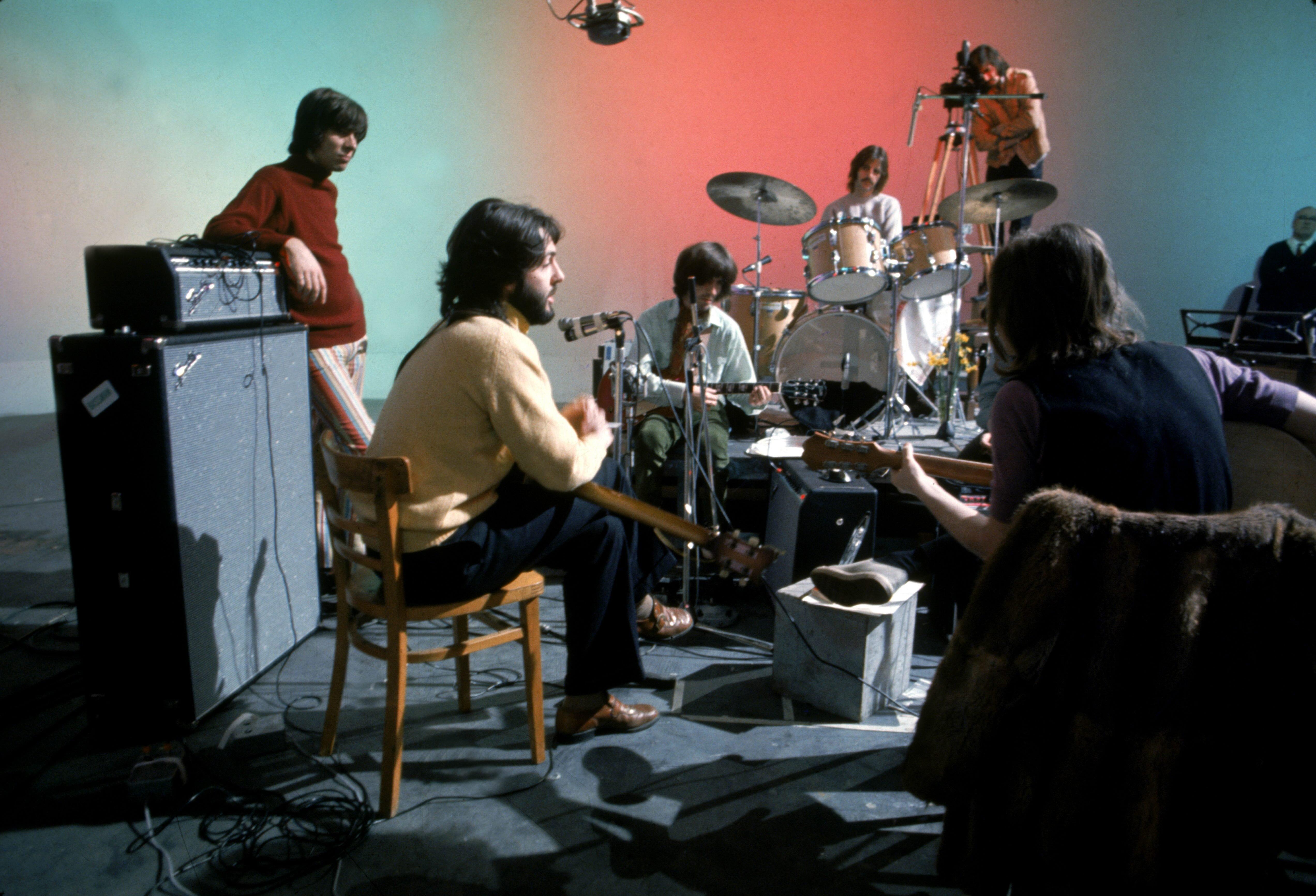
Photo: Ethan A. Russell / © Apple Corps Ltd
list
5 Lesser Known Facts About The Beatles' 'Let It Be' Era: Watch The Restored 1970 Film
More than five decades after its 1970 release, Michael Lindsay-Hogg's 'Let it Be' film is restored and re-released on Disney+. With a little help from the director himself, here are some less-trodden tidbits from this much-debated film and its album era.
What is about the Beatles' Let it Be sessions that continues to bedevil diehards?
Even after their aperture was tremendously widened with Get Back — Peter Jackson's three-part, almost eight hour, 2021 doc — something's always been missing. Because it was meant as a corrective to a film that, well, most of us haven't seen in a long time — if at all.
That's Let it Be, the original 1970 documentary on those contested, pivotal, hot-and-cold sessions, directed by Michael Lindsay-Hogg. Much of the calcified lore around the Beatles' last stand comes not from the film itself, but what we think is in the film.
Let it Be does contain a couple of emotionally charged moments between maturing Beatles. The most famous one: George Harrison getting snippy with Paul McCartney over a guitar part, which might just be the most blown-out-of-proportion squabble in rock history.
But superfans smelled blood in the water: the film had to be a locus for the Beatles' untimely demise. To which the film's director, Michael Lindsay-Hogg, might say: did we see the same movie?
"Looking back from history's vantage point, it seems like everybody drank the bad batch of Kool-Aid," he tells GRAMMY.com. Lindsay-Hogg had just appeared at an NYC screening, and seemed as surprised by it as the fans: "Because the opinion that was first formed about the movie, you could not form on the actual movie we saw the other night."
He's correct. If you saw Get Back, Lindsay-Hogg is the babyfaced, cigar-puffing auteur seen throughout; today, at 84, his original vision has been reclaimed. On May 8, Disney+ unveiled a restored and refreshed version of the Let it Be film — a historical counterweight to Get Back. Temperamentally, though, it's right on the same wavelength, which is bound to surprise some Fabs disciples.
With the benefit of Peter Jackson's sound-polishing magic and Giles Martin's inspired remixes of performances, Let it Be offers a quieter, more muted, more atmospheric take on these sessions. (Think fewer goofy antics, and more tight, lingering shots of four of rock's most evocative faces.)
As you absorb the long-on-ice Let it Be, here are some lesser-known facts about this film, and the era of the Beatles it captures — with a little help from Lindsay-Hogg himself.
The Beatles Were Happy With The Let It Be Film
After Lindsay-Hogg showed the Beatles the final rough cut, he says they all went out to a jovial meal and drinks: "Nice food, collegial, pleasant, witty conversation, nice wine."
Afterward, they went downstairs to a discotheque for nightcaps. "Paul said he thought Let it Be was good. We'd all done a good job," Lindsay-Hogg remembers. "And Ringo and [wife] Maureen were jiving to the music until two in the morning."
"They had a really, really good time," he adds. "And you can see like [in the film], on their faces, their interactions — it was like it always was."
About "That" Fight: Neither Paul Nor George Made A Big Deal
At this point, Beatles fanatics can recite this Harrison-in-a-snit quote to McCartney: "I'll play, you know, whatever you want me to play, or I won't play at all if you don't want me to play. Whatever it is that will please you… I'll do it." (Yes, that's widely viewed among fans as a tremendous deal.)
If this was such a fissure, why did McCartney and Harrison allow it in the film? After all, they had say in the final cut, like the other Beatles.
"Nothing was going to be in the picture that they didn't want," Lindsay-Hogg asserts. "They never commented on that. They took that exchange as like many other exchanges they'd had over the years… but, of course, since they'd broken up a month before [the film's release], everyone was looking for little bits of sharp metal on the sand to think why they'd broken up."
About Ringo's "Not A Lot Of Joy" Comment…
Recently, Ringo Starr opined that there was "not a lot of joy" in the Let it Be film; Lindsay-Hogg says Starr framed it to him as "no joy."
Of course, that's Starr's prerogative. But it's not quite borne out by what we see — especially that merry scene where he and Harrison work out an early draft of Abbey Road's "Octopus's Garden."
"And Ringo's a combination of so pleased to be working on the song, pleased to be working with his friend, glad for the input," Lindsay-Hogg says. "He's a wonderful guy. I mean, he can think what he wants and I will always have greater affection for him.
"Let's see if he changes his mind by the time he's 100," he added mirthfully.
Lindsay-Hogg Thought It'd Never Be Released Again
"I went through many years of thinking, It's not going to come out," Lindsay-Hogg says. In this regard, he characterizes 25 or 30 years of his life as "solitary confinement," although he was "pushing for it, and educating for it."
"Then, suddenly, the sun comes out" — which may be thanks to Peter Jackson, and renewed interest via Get Back. "And someone opens the cell door, and Let it Be walks out."
Nobody Asked Him What The Sessions Were Like
All four Beatles, and many of their associates, have spoken their piece on Let it Be sessions — and journalists, authors, documentarians, and fans all have their own slant on them.
But what was this time like from Lindsay-Hogg's perspective? Incredibly, nobody ever thought to check. "You asked the one question which no one has asked," he says. "No one."
So, give us the vibe check. Were the Let it Be sessions ever remotely as tense as they've been described, since man landed on the moon? And to that, Lindsay-Hogg's response is a chuckle, and a resounding, "No, no, no."
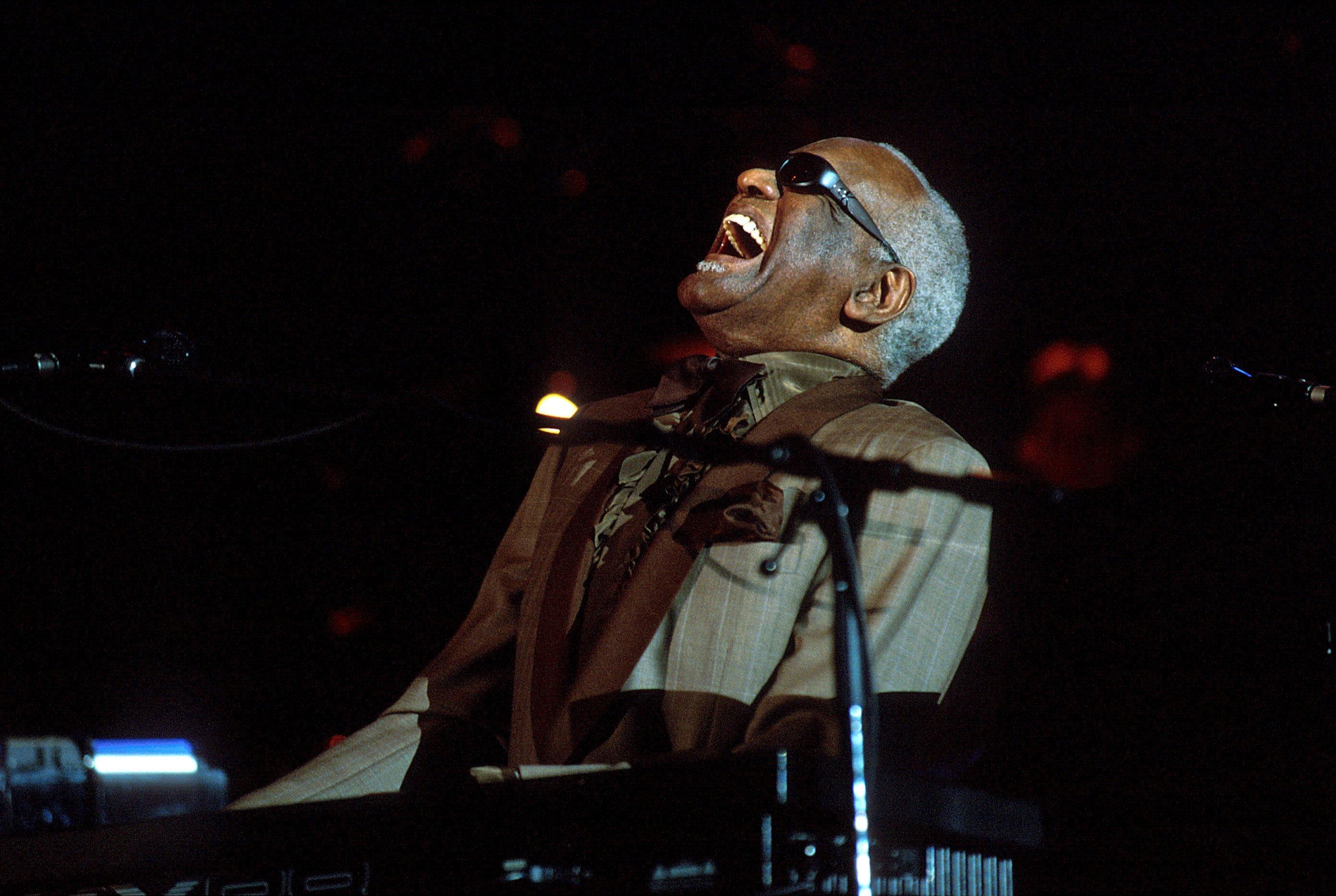
news
8 Country Crossover Artists You Should Know: Ray Charles, The Beastie Boys, Cyndi Lauper & More
Beyoncé's 'Cowboy Carter' is part of a proud lineage of artists, from Ringo Starr to Tina Turner, who have bravely taken a left turn into country's homespun, heart-on-sleeve aesthetic.
When Beyoncé announced her upcoming album, Cowboy Carter, with the drop of two distinctly country tracks, she broke both genre and barriers. Not only did Queen Bey continue to prove she can do just about anything, but she joined a long tradition of country music crossover albums.
Country music is, like all genres, a construct, designed by marketing companies around the advent of widely-disseminated recorded music, to sell albums. But in the roughly 100 intervening years, genre has dictated much about the who and how of music making.
In the racially segregated America of the 1920s, music was no exception. Marketing companies began to distinguish between "race records" (blues, R&B, and gospel) intended for Black audiences and hillbilly music (country and Western), sold to white listeners. The decision still echoes through music genre stereotypes today.
But Black people have always been a part of country music, a message that's gained recognition in recent years — in part because of advocacy work by those like Rhiannon Giddens, who plays banjo and viola on "Texas Hold 'Em," one of two singles Beyoncé released in advance of Cowboy Carter.
And since rigid genre rules' inception, many artists from Lil Nas X to Bruce Springsteen have periodically dabbled in or even crossed over to country music.
In honor of Beyoncé's foray, here are eight times musicians from other genres tried out country music.
Ray Charles — Modern Sounds in Country and Western Music (1962)
In 1962, the soul music pioneer crossed the genre divide to cut a swingin' two-volume, 14-track revue of country and western music.
Part history lesson and part demonstration of Charles' unparalleled musicianship, Modern Sounds in Country and Western Music covers country songs by major country artists of the era, including Hank Williams, Don Gibson, and Eddy Arnold. An instant success, the record topped album sales charts and was Charles' first atop the Billboard Hot 200 charts.
Ringo Starr — Beaucoups of Blues (1970)
The Beatles' drummer loves country music. Ringo Starr cut this album, which sounds like something you'd two-step the night away to at a honky tonk, as his second solo project. He was inspired by pedal steel guitar player and producer Pete Drake, who worked on George Harrison's All Things Must Pass.
With Drake's help, Starr draws out a classic honky tonk sound — pedal steel, country fiddle, and bar room piano — to round out the album.
Beaucoups includes a textbook country heartbreak song, "Fastest Growing Heartache in the West," a bluesy ramblin' man ballad, "$15 Draw," and a surprisingly sweet love song to a sex worker, "Woman Of The Night."
The Pointer Sisters — Fairytale (1974)
Remembered for their R&B hits like "I'm So Excited" and "Jump (For My Love)", the Pointer Sisters dropped "Fairytale," a classic country heartbreak song into the middle of their second studio album, That's A Plenty.
Full of honky tonk pedal steel and fiddle, the track earned the band a GRAMMY award for Country and Western Vocal Performance Group or Duo in 1975, beating out Willie Nelson, Kris Kristofferson, Bobby Bare, and the Statler Brothers; they were the first, and to date, only Black women to receive the award.
The same year the song came out, the Pointer Sisters also became the first Black group to play the Grand Ole Opry, arriving to find a group of protesters holding signs with messages like 'Keep country, country!'
Tina Turner — Tina Turns the Country On! (1974)
Also in 1974, Tina Turner cut her first solo album, Tina Turns the Country On!, while she was still performing with then-husband Ike Turner as the Ike & Tina Turner Revue.
Containing the seeds of the powerful, riveting voice she'd fully let loose in her long solo career after separating from her abusive husband, the album presents a stripped down, mellow Turner.
She covers songs like Kris Kristofferson's "Help Me Make It Through The Night" and Bob Dylan's "Tonight I'll Be Staying Here With You," and delivers a soaring rendition of Dolly Parton's "There Will Always Be Music."
Turner was nominated for a GRAMMY award for the album, but in Best R&B Vocal Performance, Female, category.
The Beastie Boys — Country Mike's Greatest Hits (1999)
This Beastie Boys cut only a few hundred copies (most reports say 300) of this spoof country album — reputedly conceived of as a Christmas present for friends and family, and never officially released.
Presenting the supposed greatest hits of a slightly dodgy, enigmatic character – Country Mike, who shares a name with band member "Mike D" Diamond — the album sounds like vintage steel guitar country. Think Hank Williams and Jimmy Rodgers with a dash of musical oddballs Louden Wainwright III and David Allen Coe's humor and funk.
Country Mike appears just briefly in the liner notes of the band's anthology album, The Sounds of Silence, (which also includes two of the album's tracks: "Railroad Blues" and "Country Mike's Theme"), as part of an alternate universe wherein Mike temporarily lost his memory when he was hit on the head.
"The psychologists told us that if we didn't play along with Mike's fantasy, he could be in grave danger," the notes read. "This song ('Railroad Blues') is one of the many that we made during that tragic period of time."
Cyndi Lauper — Detour (2016)
The "Girls Just Want To Have Fun" singer enjoyed herself thoroughly by deviating from her typical style with 2016's Detour.
Road tripping into country music land, Lauper covered country songs of the 1950s and 1960s, including Marty Robbins' "Begging You," Patsy Montana's "I Want to be a Cowboy's Sweetheart" and Dolly Parton's "Hard Candy Christmas" with guest appearances by Willie Nelson, Alison Krauss, Emmylou Harris, and Vince Gill.
Jaret Ray Reddick — Just Woke Up (2022)
It might be hard to imagine the Bowling for Soup frontman, known for teenage pop-punk angst hits like "Girl all the Bad Guys Want" and "Punk Rock 101" crooning country ballads.
But in 2022, under the name Jaret Ray Reddick, he cut his solo debut, Just Woke Up. Drawing inspiration from Reddick's native Texas, the steel guitar and twang driven album features duets with Uncle Cracker, Cody Canada, Frank Turner, and Stephen Egerton.
Self-effacing and personable as ever, Reddick heads off questions about the viability of his country music with the album's first track, "Way More Country," acknowledging the questions listeners might have:
"I sing in a punk rock band/ And I know every word to that Eminem song "Stan"/ And I've got about a hundred and ten tattoos / But I'm way more country than you."
Bing Crosby — "Pistol Packin' Mama" (Single, 1943)
Legendary crooner of classic Christmas Carols and American standards, Bing Crosby decided to try his hand at country music with his cover of Al Dexter's "Pistol Packin' Mama," the first country song to appear on Billboard's charts.
The song, which tells the story of a man begging his woman not to shoot him when she discovers him out on the town fooling around, has since also been covered by Willie Nelson, Hoyt Axton, and John Prine.
How Beyoncé Is Honoring Black Music History With "Texas Hold Em," 'Renaissance' & More
